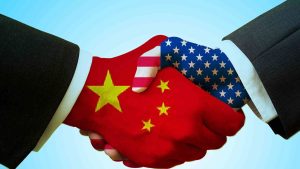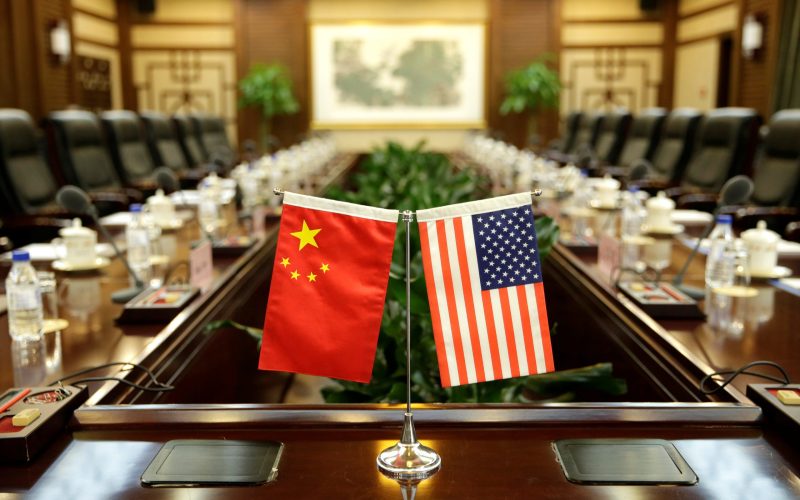The Evolution of US-China Relations in the 21st Century

US-China relations have undergone significant transformations in the 21st century, marked by fluctuating trade tensions and a complex web of economic interdependence. Initially, the relationship between the two nations was characterized by mutual economic benefits, with the United States and China becoming deeply intertwined through trade and investment. However, this economic interdependence has also led to heightened trade tensions, particularly under the Trump administration, which saw the imposition of tariffs and a trade war that reverberated through global markets. Despite these tensions, the economic interdependence between the two countries remains a defining feature of their relationship, necessitating a careful balance of competition and cooperation.
In addition to economic factors, technological competition and cybersecurity concerns have become central to US-China relations. The race for technological supremacy has intensified, with both nations striving to lead in areas such as artificial intelligence, 5G networks, and quantum computing. This technological rivalry has not only spurred innovation but also raised cybersecurity concerns, as both countries accuse each other of cyber espionage and intellectual property theft. These issues have added another layer of complexity to the US-China relationship, shaping the dynamics of their interactions in the 21st century.
Economic interdependence and competition
Economic interdependence shapes US-China relations dynamics in profound ways. The two economies are the largest in the world, and their economic activities are deeply interconnected. This interdependence means that economic policies and decisions in one country can have significant repercussions in the other. For instance, China’s role as a major manufacturing hub for American companies has created a symbiotic relationship where the US benefits from low-cost goods, while China enjoys substantial export revenues. However, this interdependence also means that economic disruptions, such as trade wars or supply chain issues, can have far-reaching impacts on both nations’ economies.
Competition drives technological advancements in US-China relations, as both nations strive to outdo each other in various technological domains. This competition has led to significant investments in research and development, with both countries aiming to achieve breakthroughs that can provide them with a strategic advantage. The US, with its established tech giants and innovative startups, continues to lead in many areas, but China is rapidly catching up, particularly in fields like artificial intelligence and telecommunications. This competitive drive has not only accelerated technological progress but also heightened tensions, as both countries seek to protect their technological advancements and maintain their competitive edge.
Technological Rivalry and Innovation

Technological rivalry is shaping US-China relations in unprecedented ways. The quest for technological dominance has become a central aspect of the bilateral relationship, influencing policies and strategies on both sides. The US has long been a leader in technological innovation, but China’s rapid advancements in technology have challenged this dominance. This rivalry is evident in the race to develop cutting-edge technologies such as 5G, where China’s Huawei has emerged as a global leader, prompting concerns in the US about security and technological reliance on Chinese firms. The competition extends to other areas like artificial intelligence, where both countries are investing heavily to gain a strategic edge.
Innovation is driving the new era of US-China relations, as both nations recognize the critical importance of technological leadership in the 21st century. The race to innovate is not just about economic gains but also about national security and geopolitical influence. Both countries are pouring resources into their tech sectors, fostering environments that encourage innovation and attract top talent. This focus on innovation is reshaping their economies and their global standing, as technological prowess becomes a key determinant of national power. As a result, the US-China relationship is increasingly defined by their respective abilities to innovate and lead in the technology sector.
Military tensions and strategic balance
Military tensions impact US-China relations significantly, adding another layer of complexity to an already multifaceted relationship. The South China Sea, Taiwan, and the broader Asia-Pacific region are flashpoints where military posturing and strategic maneuvers by both nations have heightened tensions. The US, with its longstanding alliances and military presence in the region, views China’s military expansion and assertiveness as a challenge to the existing strategic balance. Conversely, China perceives US military activities in its vicinity as a threat to its sovereignty and regional ambitions. These military tensions have the potential to escalate, making the need for strategic dialogue and crisis management mechanisms more critical than ever.
Strategic balance is crucial in US-China relations, as both nations seek to navigate their differences while avoiding open conflict. Maintaining this balance involves a delicate interplay of deterrence, diplomacy, and cooperation. The US aims to uphold its strategic commitments to allies and partners in the Asia-Pacific, while China seeks to assert its influence and protect its interests. Achieving a strategic balance requires both nations to engage in continuous dialogue, build confidence-building measures, and establish clear communication channels to manage potential crises. This strategic balance is essential for regional stability and for preventing military tensions from undermining broader aspects of the US-China relationship.
Diplomatic efforts and challenges
US-China relations are characterized by evolving diplomatic strategies and complexities. Diplomatic efforts between the two nations have seen periods of engagement and confrontation, reflecting the broader dynamics of their relationship. High-level dialogues, such as the US-China Strategic and Economic Dialogue, have provided platforms for addressing a wide range of issues, from trade and investment to security and human rights. However, these efforts are often complicated by differing priorities and perspectives, making it challenging to achieve lasting agreements. The diplomatic landscape is further complicated by domestic political considerations in both countries, which can influence their foreign policy approaches and diplomatic strategies.
Addressing mutual challenges in a new era requires innovative and flexible diplomatic approaches. The US and China face a range of shared challenges, including climate change, global health crises, and nuclear non-proliferation. Successfully addressing these issues necessitates cooperation and collaboration, despite the underlying tensions and competition. Diplomatic efforts must focus on finding common ground and building trust, while also managing the areas of disagreement. This new era of US-China relations demands a pragmatic approach that recognizes the complexities of the relationship and seeks to balance competition with cooperation to address global challenges effectively.
Human Rights and Ideological Differences

Human rights issues strain US-China relations, often leading to public confrontations and diplomatic friction. The US has consistently raised concerns about China’s human rights record, particularly regarding issues such as the treatment of Uyghur Muslims in Xinjiang, the crackdown on pro-democracy activists in Hong Kong, and restrictions on freedom of expression and political dissent. These human rights concerns are a significant point of contention, with the US advocating for greater accountability and adherence to international human rights standards. China’s response has typically been to reject external criticisms as interference in its internal affairs, further straining the bilateral relationship.
Ideological differences impact US-China relations significantly, as the two nations represent contrasting political systems and values. The US, with its democratic governance and emphasis on individual freedoms, often finds itself at odds with China’s one-party authoritarian system and state-centric approach. These ideological differences influence their respective foreign policies and contribute to mutual distrust. The US views China’s rise as a challenge to the liberal international order, while China perceives US actions as attempts to contain its growth and influence. Navigating these ideological differences requires careful diplomacy and a recognition of the fundamental values and principles that underpin each nation’s approach to governance and international relations.
Global influence and leadership dynamics
US-China relations shape global influence and leadership dynamics, as both nations vie for dominance on the world stage. The US has long been a global leader, with its economic and military power, as well as its cultural and ideological influence. However, China’s rapid economic growth and strategic investments, such as the Belt and Road Initiative, have significantly expanded its global footprint. This competition for influence extends to international institutions, where both nations seek to shape global norms and standards in ways that reflect their interests and values. The interplay between US and Chinese influence is reshaping the global order, with implications for international stability and governance.
Leadership dynamics in US-China relations impact global stability, as the actions and policies of these two major powers reverberate across the world. The US and China have the ability to set the tone for international relations, whether through cooperation on global issues or through their strategic rivalry. Their leadership roles in addressing global challenges, such as climate change, pandemics, and economic crises, are crucial for ensuring a stable and prosperous world. As the US and China navigate their complex relationship, their ability to manage competition and foster cooperation will be key to maintaining global stability and addressing the pressing issues facing humanity in the 21st century.










